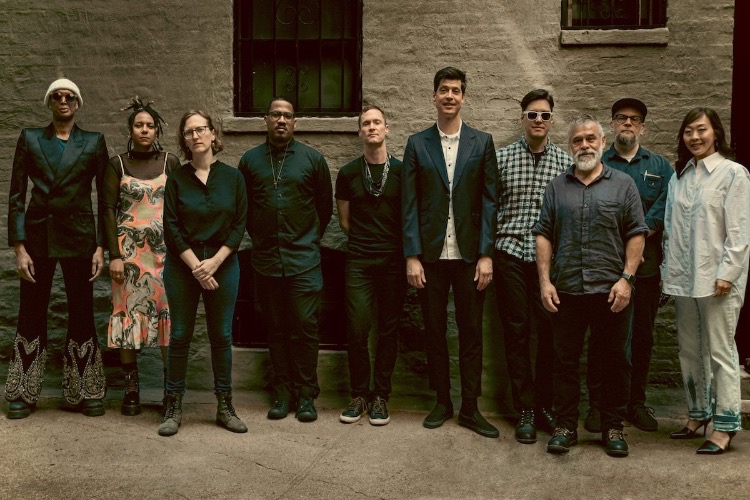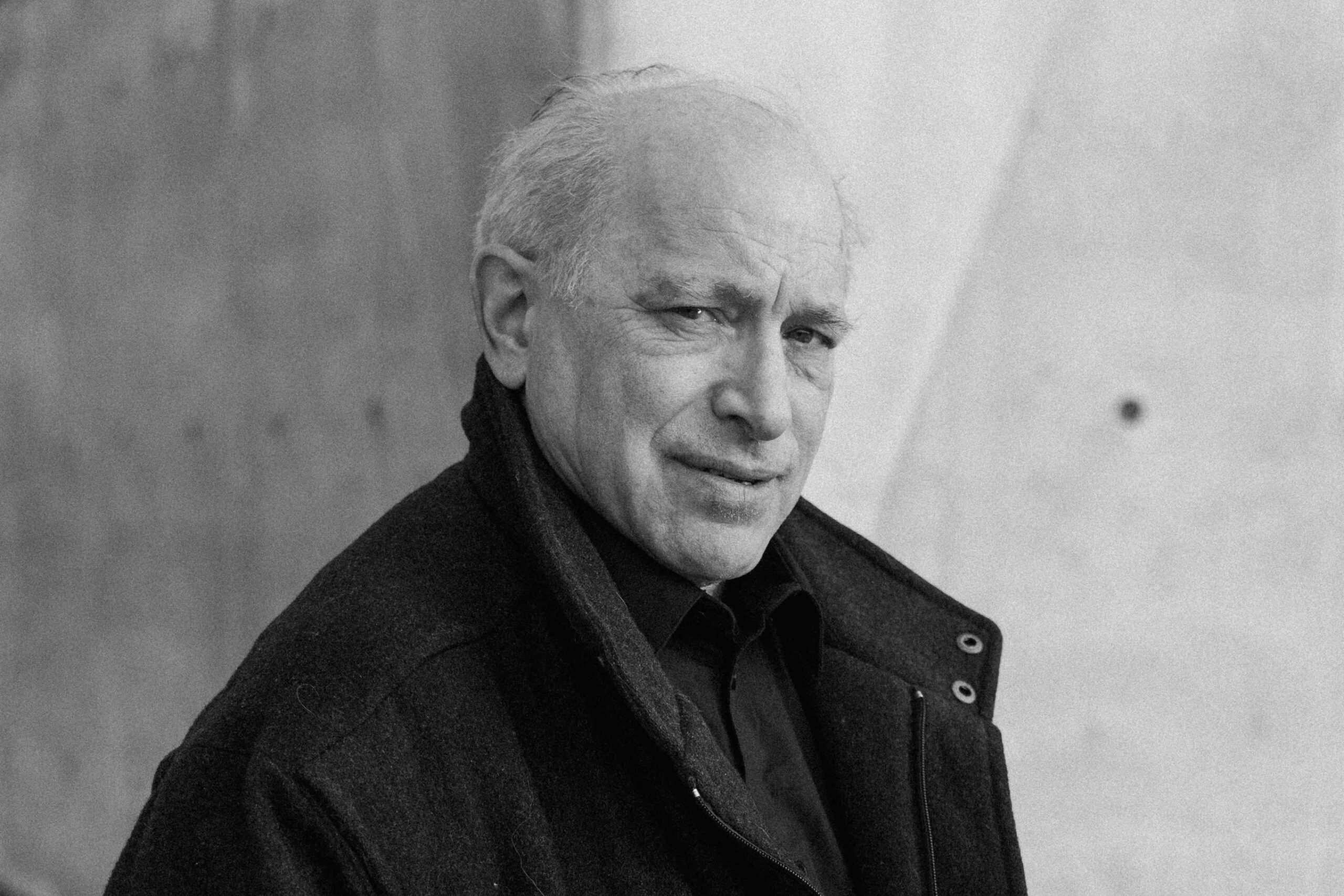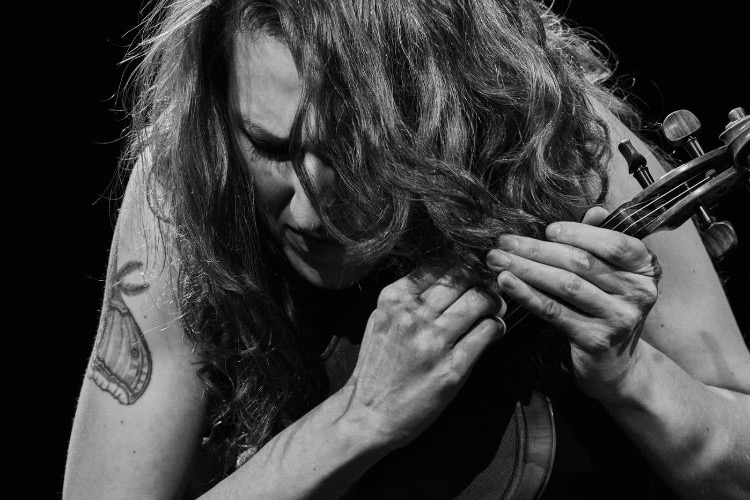Broken Trance: A Conversation with Ches Smith on ‘Laugh Ash’
|
Getting your Trinity Audio player ready...
|
As Arnold Schoenberg once noted, “Intelligibility in music seems to be impossible without repetition.” Repetition is a shared facet of all music. And it seems an attraction to repetition is an innately human response. Repetition transcends style. Repetition transcends culture. Repetition transcends era. But things are not exactly as they seem. Merely copying a sound ad nauseum runs the risk of “semantic satiation”, the psychological concept that hearing something too often makes it lose meaning. Hence, it should be no surprise that artists also focus on finding ways to break trances of repetition. Even with artists like Steve Reich or Philip Glass, their works, in which repetition is paramount, use themes that gradually evolve and change. This delicate balance between repetition and breaking free of patterns lies at the center of Ches Smith’s Laugh Ash (Pyroclastic, 2024).
Across the album, Smith frequently sets up steady rhythmic patterns and themes, but once they become familiar, he moves in a shockingly different direction. This is seen particularly well on “Minimalism,” where a synthesizer arpeggio guides the affair. Just as the theme starts to sound routine, it drops away to reveal searing string lines and rap-like spoken word vocals. Similarly, “The Most Fucked” starts with a rapid-fire stream of electronic whirs and beats that almost makes the listener feel trapped in a fever dream in which they live inside some infernal video game world. But, even here, slight provocations by Anna Webber’s flute and a steady sampled-like drum machine move the piece from its origins into contemporary classical music and hip-hop.
The dectet – a powerhouse of Shara Lunon, Anna Webber, Oscar Noriega, James Brandon Lewis, Nate Wooley, Jennifer Choi, Kyle Armbrust, Michael Nicolas, Shahzad Ismaily, and Smith – is well suited to provide the album’s ever-shifting sonic environments. Each member, across various other projects, has melted down stylistic and aesthetic barriers between music to forge new organic creations. Smith, himself, has the openness of his trio, the avant-chamber creations of John Zorn, the Haitian Voudou of We All Break, and the avant-punk of Marc Ribot’s Ceramic dog available in his arsenal, and he pulls from each and more throughout the recording.
Thus, even when drawing upon the shared human attraction to repetition, Laugh Ash scorches a new trail all its own. The recording is wildly unpredictable throughout. And yet, there is something that invariably devours the listener’s attention, leaving themes and sonic ideas seared into their memory.
PostGenre: Your group on Laugh Ash has a lot of firepower. How did it come together?
Ches Smith: The band first came from my relationships with Nate Wooley, Anna Weber, and Oscar Noriega. Then we added Jennifer Choi as the first of the string players. I met the cellist, Michael Nicolas, through my working with [John] Zorn.
So, the group came from picking musicians I like to work with, and then figuring out interesting ways to put music together. We first started by figuring out blends of instruments based on how each musician improvises and the vocabulary that they use.
PG: You had a version of this group at Roulette in 2017 with a similar lineup. First, what took so long for the project to turn into its final recorded version? And, second, how do you feel the group has changed during those seven years between the Roulette performance and the album release?
CS: Oh, those are good questions.
Well, first, the time between the 2017 performance and the recording was simply a matter of timing. It took a long time to get to recording Laugh Ash because I was busy working on other projects. When we played at Roulette in 2017, I had recently released a record with my trio [The Bell (ECM, 2016)] with Mat Maneri and Craig Taborn. After that, I ended up focusing on my group, We All Break. When we finished The Bell, [ECM founder-producer] Manfred [Eicher] asked me to do a follow-up with the trio but my focus was on We All Break. After [We All Break’s] Path of Seven Colors (Pyroclastic, 2021), we did another trio record [Interpret it Well (Pyroclastic, 2022)] with Bill Frisell joining us. In between the two albums, COVID hit and put us on pause for a long time. Laugh Ash was something I wanted to wait to record until all those other projects were behind me.
As far as the Roulette performance, I very much liked that gig, but I wanted to expand upon it. I wanted the group to sound more full. I also wanted to incorporate more of my work on electronics. The electronics I added to the live performance were primarily cheap drum machine stuff. Revamping the electronics was a priority and I spent a lot of time on it. Previously, much of my electronics experience was with [Marc Ribot’s] Ceramic Dog and my solo project, Congs for Brums. For both, if I was using drum machines, I usually played on the kit along with the machine to fatten up the sound of the machine. During the pandemic, I amplified my work with electronic sounds and beats. I made all these tracks and tried to figure out how to make them groove with machines without me playing behind them.
PG: What was behind the decision to add musicians not on the Roulette date – Shara Lunon, James Brandon Lewis, Kyle Armbrust, and Shahzad Ismaily – for the recording?
CS: Well, as far as Shahzad, I felt like I needed a bassist for the group. I’ve worked with Shahzad for twenty-something years. We have a strong hookup from playing together so much. He can make anything feel great. I thought that it wouldn’t hurt to have him on bass given our connection. He’s also a very unpredictable improviser. You can hear that aspect of his work on the record, but it’s especially clear live.
I also wanted to fill out the string section. So, I asked Mike Nicolas and Jenny Choi who they liked to play with. They both instantly brought up Kyle. I’d done some stuff with Kyle before, with [the International Contemporary Ensemble], and with Vijay Iyer. So, I knew Kyle and liked him a lot.
I met Shara during the pandemic at the New School. Before that, I had heard her name a lot from my friends, Darius Jones and Gerald Cleaver. All of that led to us doing a fully improvised trio gig with Nick Dunston that was like the outest shit ever. It was impressively out, and I feel like it pushed all of us. After that trio date, I invited Shara to collaborate on this project. All the lyrics on the album are hers. We went over the instrumental parts and I gave her the freedom to write lyrics for any part that stood out to her.
PG: One interesting aspect of the vocal part is how it sounds, at times, more like spoken word poetry than singing.
CS: Yes, however, Shara also has a background in singing written music. Often her voice is used in our music almost like it is a horn. Using the human voice to sound like a horn has been done a lot. But I played a solo show right outside of Poland a few summers ago and heard a very cool band of young people that, among other things, blended voices and saxophones. That approach was incredibly striking to me. It was in the back of my head, for any parts that Shara wasn’t doing a featured vocal on, per se.
PG: And what about James?
CS: Since I first met him in 2018, James Brandon Lewis and I have both been trying to find more contexts in which we could play together. Once the pandemic ended and we could go out and play gigs again, we worked together in a freely improvised quartet. He also had me in the second version of his Unruly Manifesto band. Plus, we are both in Mendoza Hoff Revels with Ava Mendoza and Devin Hoff.
PG: That group is fantastic; Echolocation (Aum Fidelity, 2023) is a great album. So, as far as Laugh Ash, do you see this band as an ongoing group, or is it a one-off project?
CS: Well, the group is huge – ten people – so it is a little tricky to get us all together to play. But I’d like to continue it, for sure. Since some of our pieces go back to 2017, even though we took a long break between then and recording this album, we have quite a bit of history as a band. Also, the band is a collection of people I generally want to play with more. So yeah, we will keep going. We already have some live dates booked for 2024, and I can picture doing another record too.
PG: Given how much is going on in this album – voice, strings, electronics, and the rest – how did the compositions for the group come together?
CS: It was different every time. This album did have a few things that started with actual tracks I created. “Minimalism”, for instance, started with an arpeggiating thing I was trying to shape into something and ultimately became the track. That one started with an electronic thing, then I fleshed out the string and horn parts around it. Shara wrote the vocal melody, which the horns are doubling most of the time.
But a lot of the pieces started from my writing while playing piano. Before the 2017 Roulette gig, I studied string writing a lot and made a fingerboard of the various string instruments to find out what was playable and to find the harmonics. Often I’ll write at the piano to get the melodic and harmonic things together. Everything’s laid out for me at the piano. I start with super nerdy beginnings, like putting a sequence of intervals together in many different contexts to spin out a bunch of material. Then I start working with that material. Next, I consider the instrumentation and how practical it is to play something on a particular instrument. Of course, I also keep many things free. Especially with Anna and Oscar.
PG: The result is a recording that pulls from many genres and styles. You have done significant work with John Zorn, especially over the last few years. Do you feel like the work you’ve done for him influenced Laugh Ash at all?
CS: Possibly. But, even if so, it was not something conscious on my part. I think it might be fair to say that Zorn thinks more in terms of genre than I do.
John and I worked closely together on his records, including mixing. You can’t help but notice how clear his cuts are, even live. He thinks in blocks. I don’t think that way, but I think he’s great at execution. I think his strengths in execution have changed me as a player. I’ve gotten way better at playing his music during the last five years and, of course, changes to your performance like that will shape everything you do.
PG: Do you think, because Laugh Ash pulls from so many of your musical experiences, that this project better reflects your broad approach to music than your other projects?
CS: It might show some more sides of my music. It’s hard for me to determine what types of music that certain ideas come from. Other than the use of 808s. [Laughing]. We all know where that comes from. We All Break was more focused on the Haitian drums. But as far as writing music, I generally don’t know where ideas come from. Of course, incorporating improvisation also then leaves many things up to the improvisers, who bring their own references. But I would say that this album draws from a different circle of influences than other things I’ve done.
This group also features significantly more of my writing than is usually the case with my projects. I usually let the improvisations do most of the heavy lifting. With Laugh Ash, the improvisations are more tucked into writing that is much more structured.
PG: In 2022, when we discussed your trio recording with Bill Frisell, the pieces were left very open. It seems that with a group as large as Laugh Ash, which pulls from a large number of influences, that structure would be essential.
CS: I mean, I could try the project fully improvised. Actually, we did a lot of very free pieces that we didn’t end up putting on the album. They ultimately didn’t fit the narrative of the record. I was very interested with this recording in following my writing more, not as a permanent direction, but it made sense for this batch of music.
PG: One thing you get into in the album’s liner notes is how Laugh Ash connects with We All Break. The two groups sound very different from one another but share as a focal point the use of repetition and emphasis on breaks in repetition. What do you find so attractive about building and, then, breaking, repetitive motifs?
CS: I like the tension that repetition builds up. I’ve always been into that. My compositions, some of the earliest writing I did, for my bands Good for Cows and Theory of Ruin, both do a lot of stuff with repetition.
In Haitian Vodou music, the breaks are added for very specific reasons; for something ritualistic that needs to happen or for something spiritual. I first learned that over twenty years ago. So, there is a real-life spiritual reason for the use of repetition with We All Break.
PG: Do you have any sense as to why that approach of repeating, and then breaking, is present in almost every kind of music?
CS: I’m not sure. In the Haitian Vodou context, the break displaces the consciousness of the person and allows something else to take over. It could be that traces of this permeate all of American music, given how important Black American music is to so many different kinds of music from this country.
There are things you can do with repetition, where if you repeat something enough, it sort of breaks apart on its own. I’m not sure that happens much on Laugh Ash. I can think of many uses of repetition on the album, which do have a break. But those breaks are more to provide a release. Repetition can provide a trance, and breaking away from it can shock you out of it. I love that aesthetic contrast.
‘Laugh Ash’ will be available on February 2, 2024 on Pyroclastic Records. It can be purchased on Bandcamp. Ches Smith will also be hosting a free listening party for the album on Bandcamp. You can RSVP here. More information on Smith can be found on his website.
Photo credit: Bianca Clarcidor



